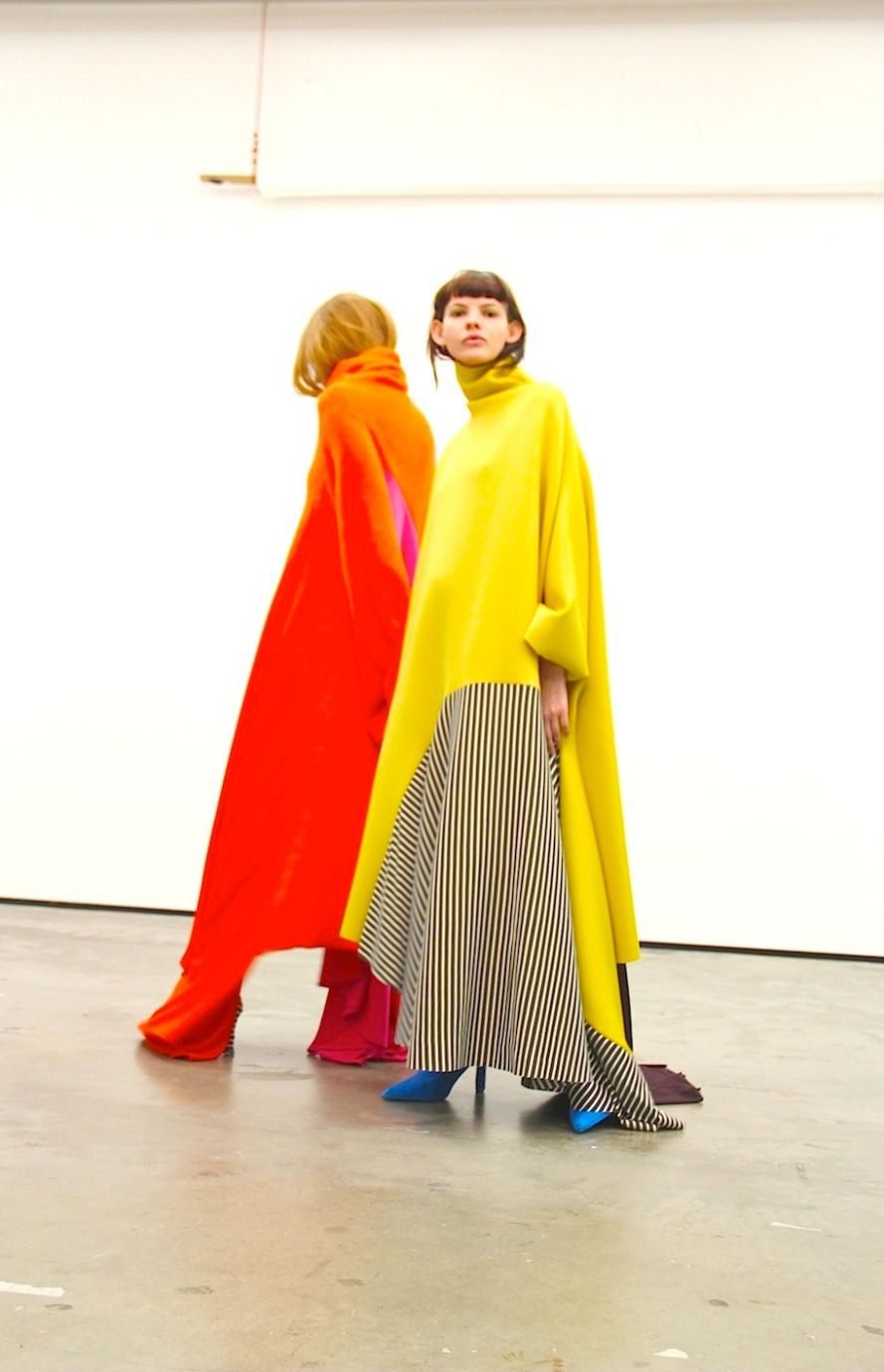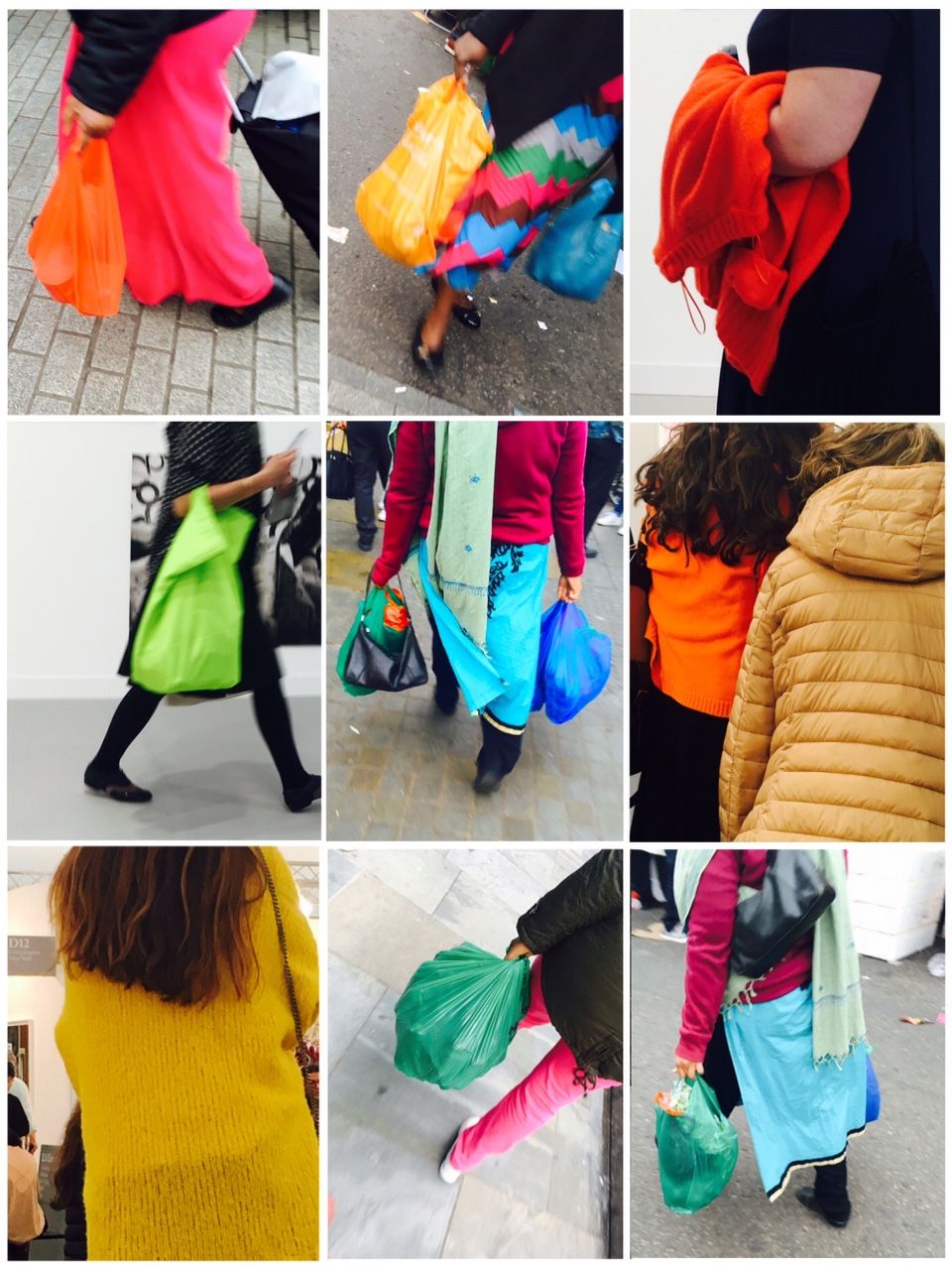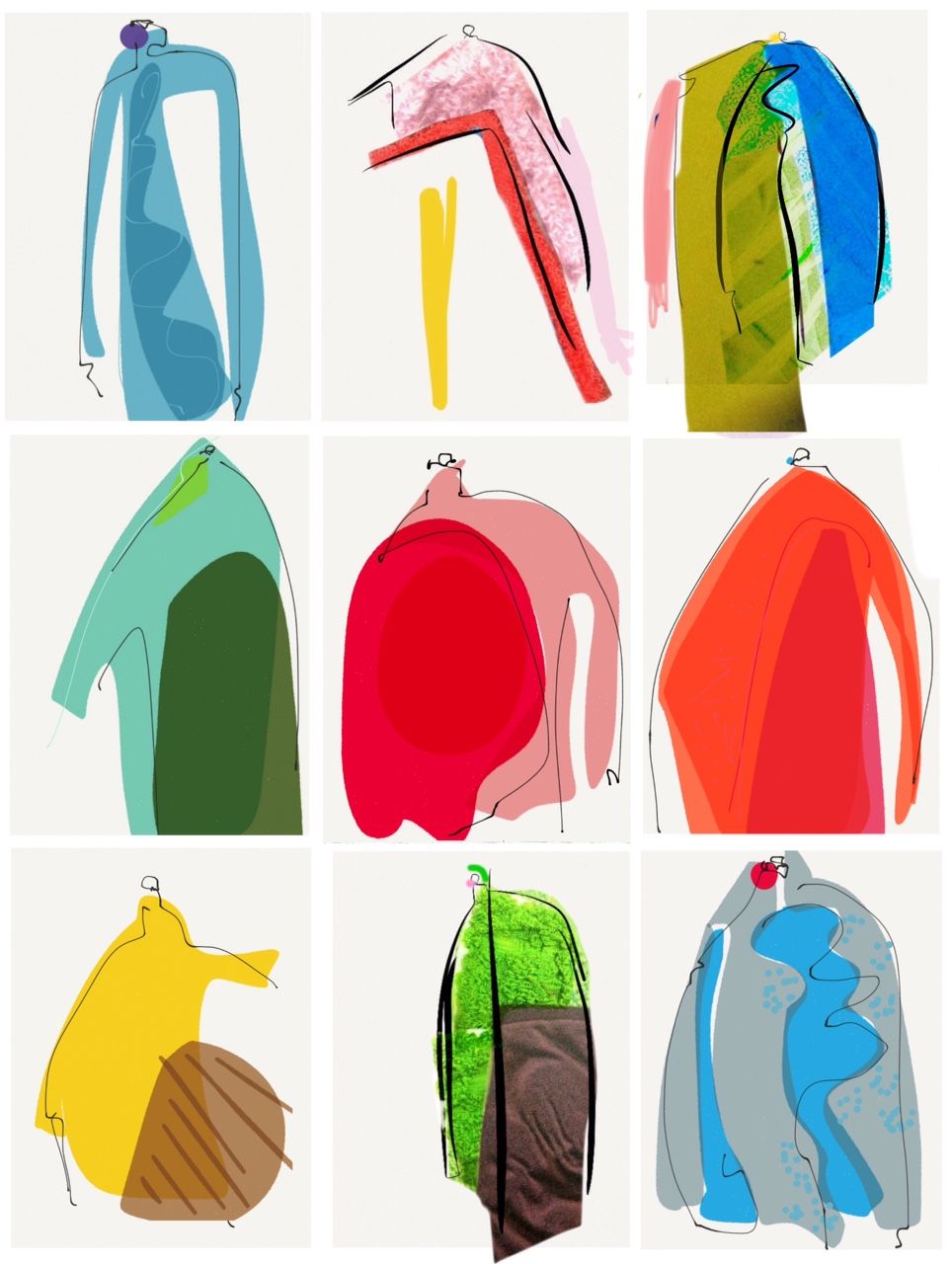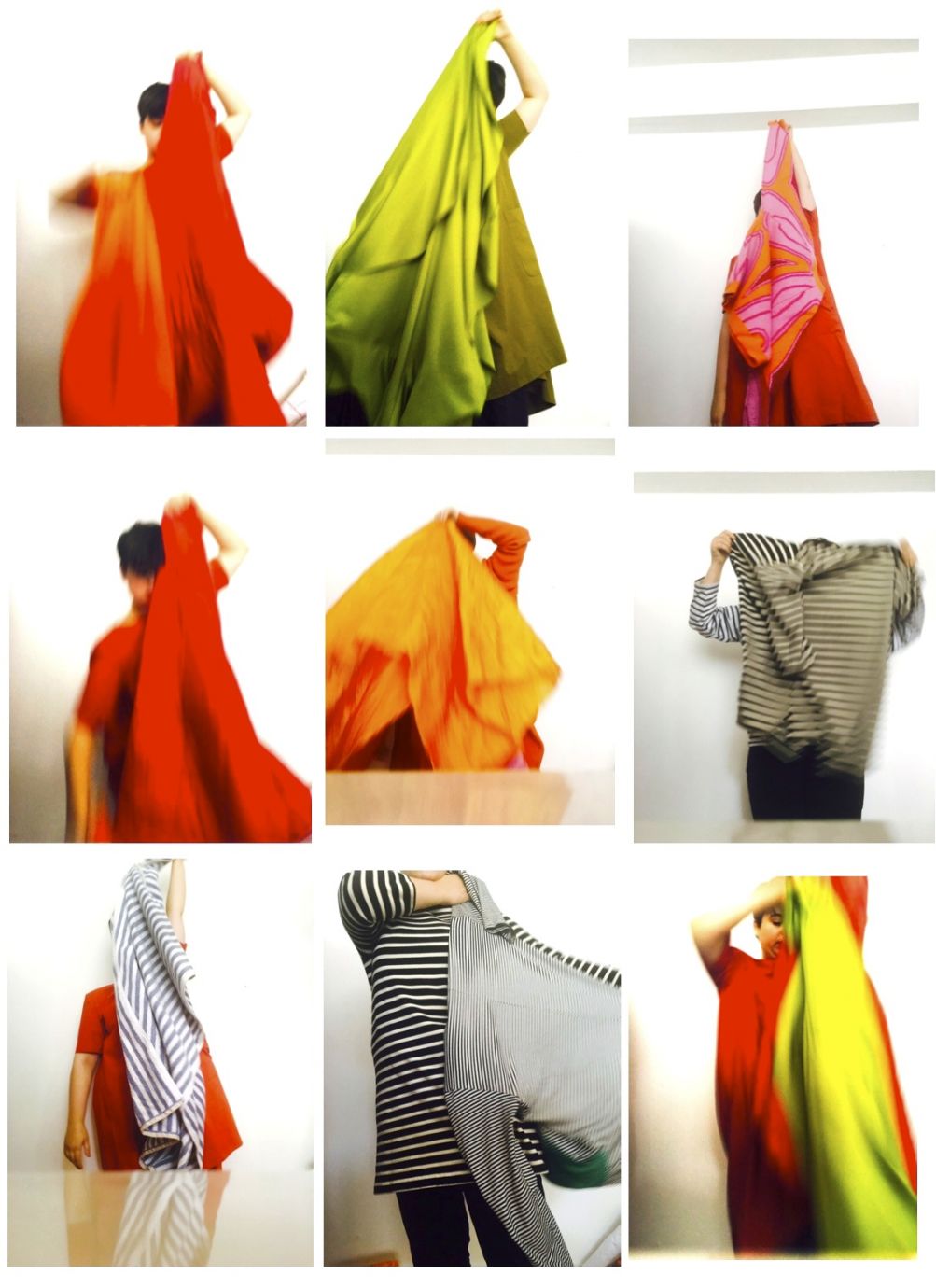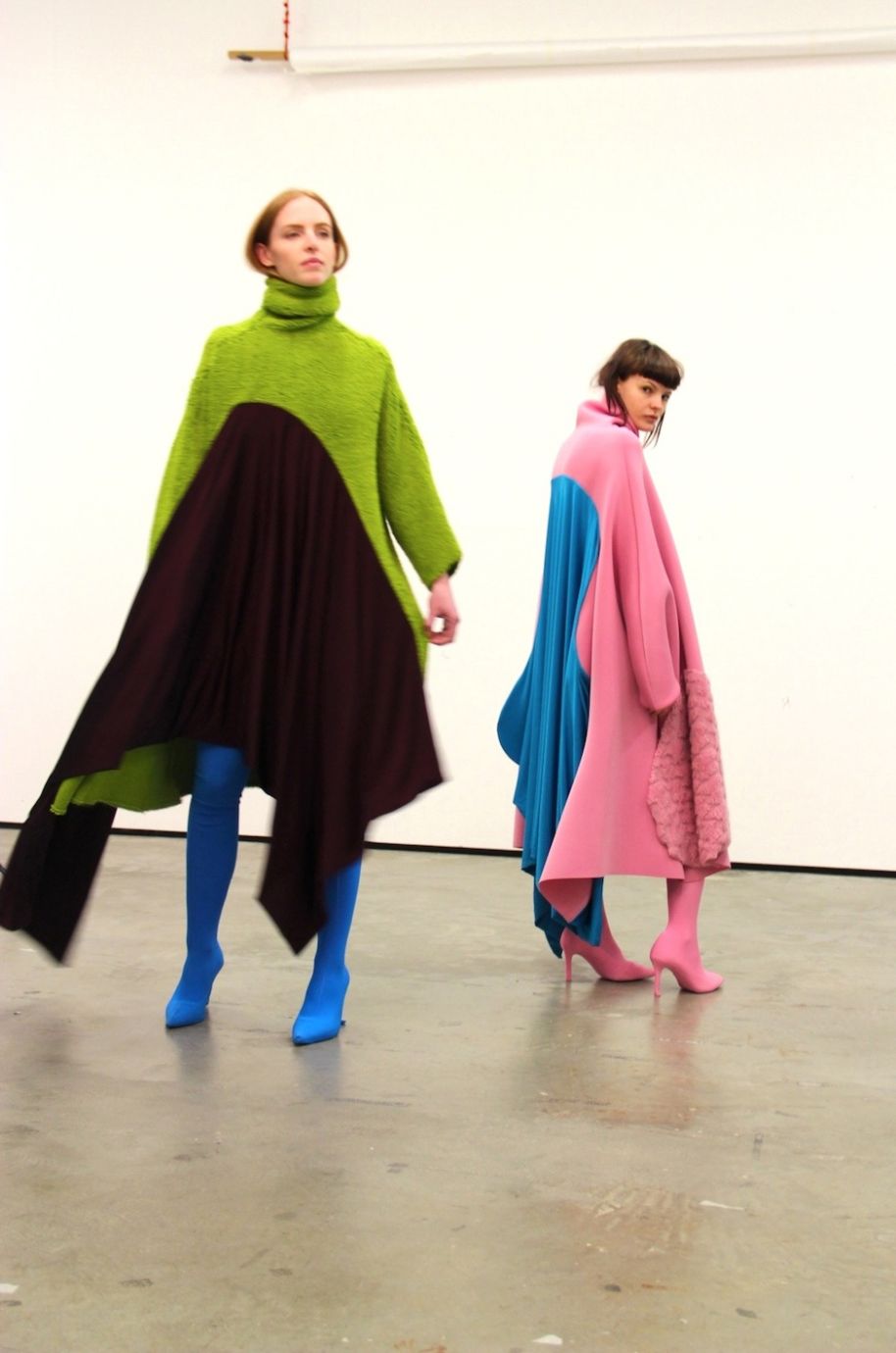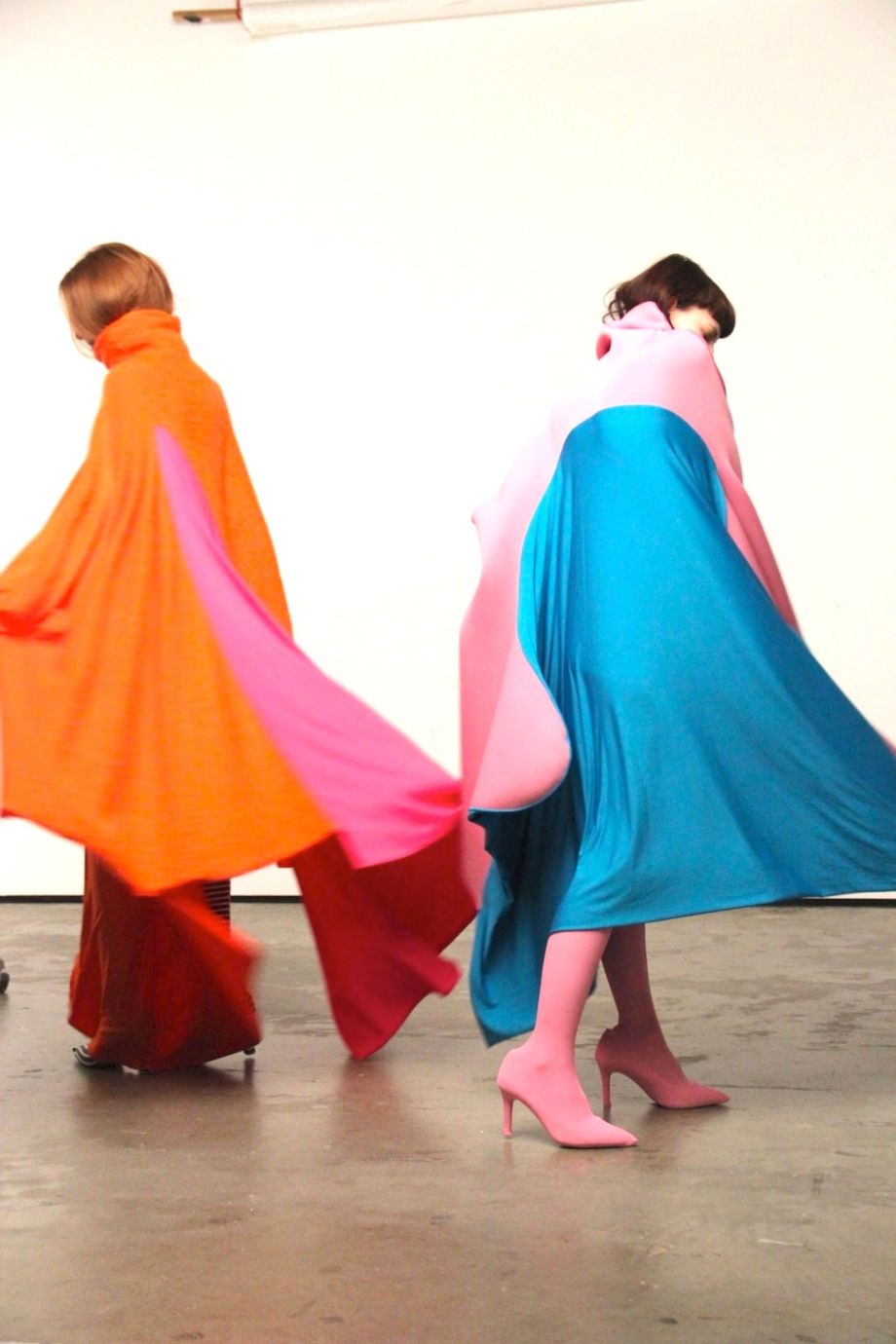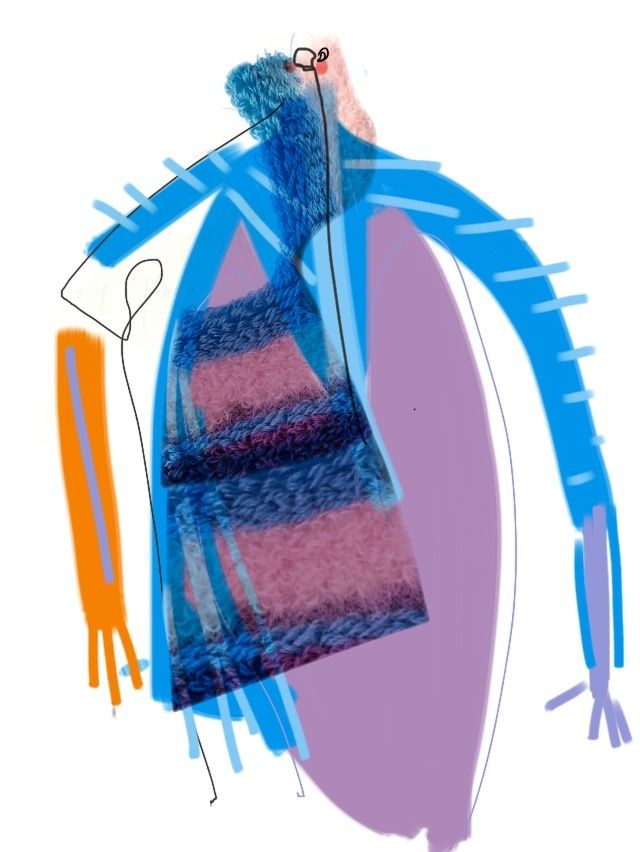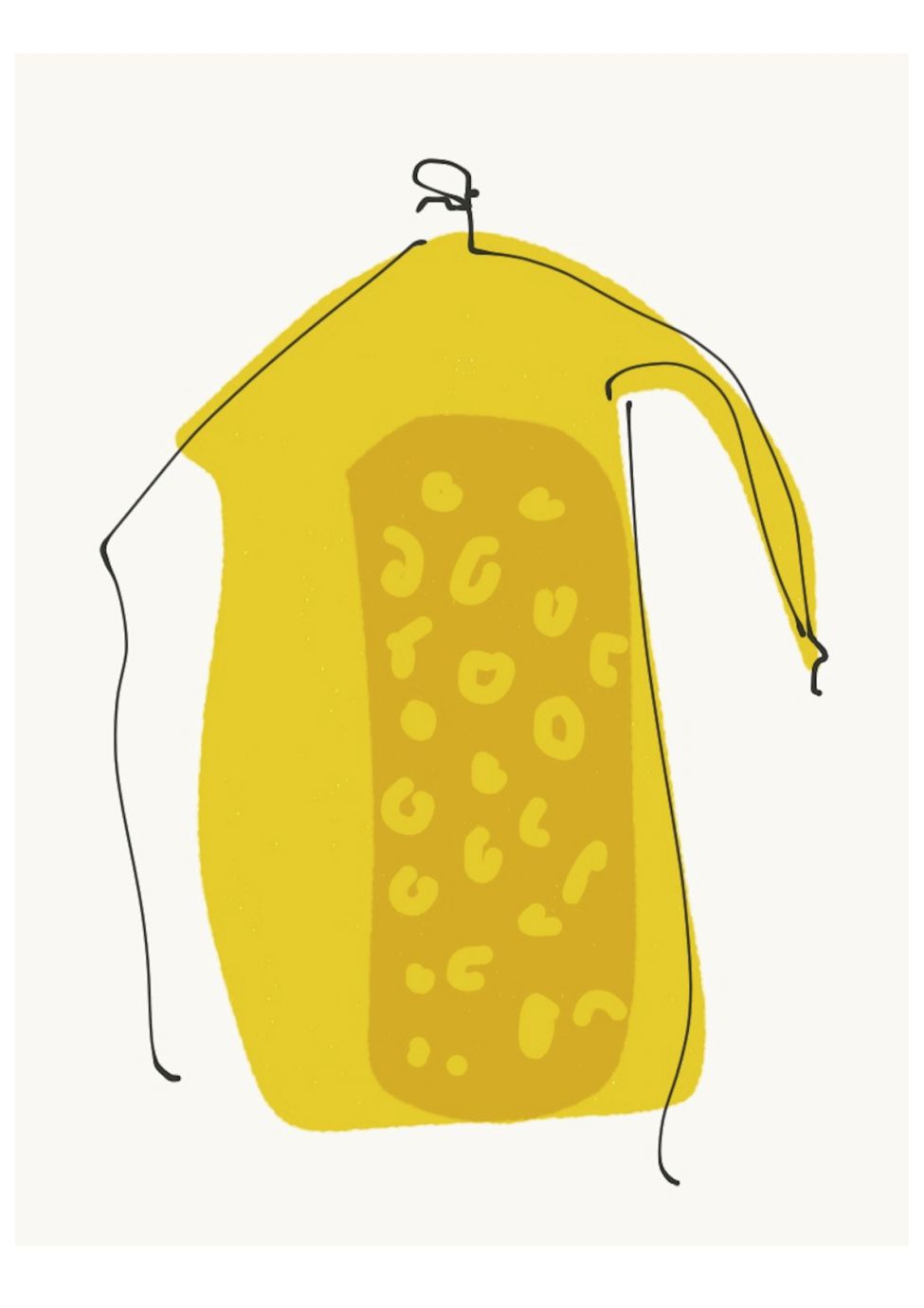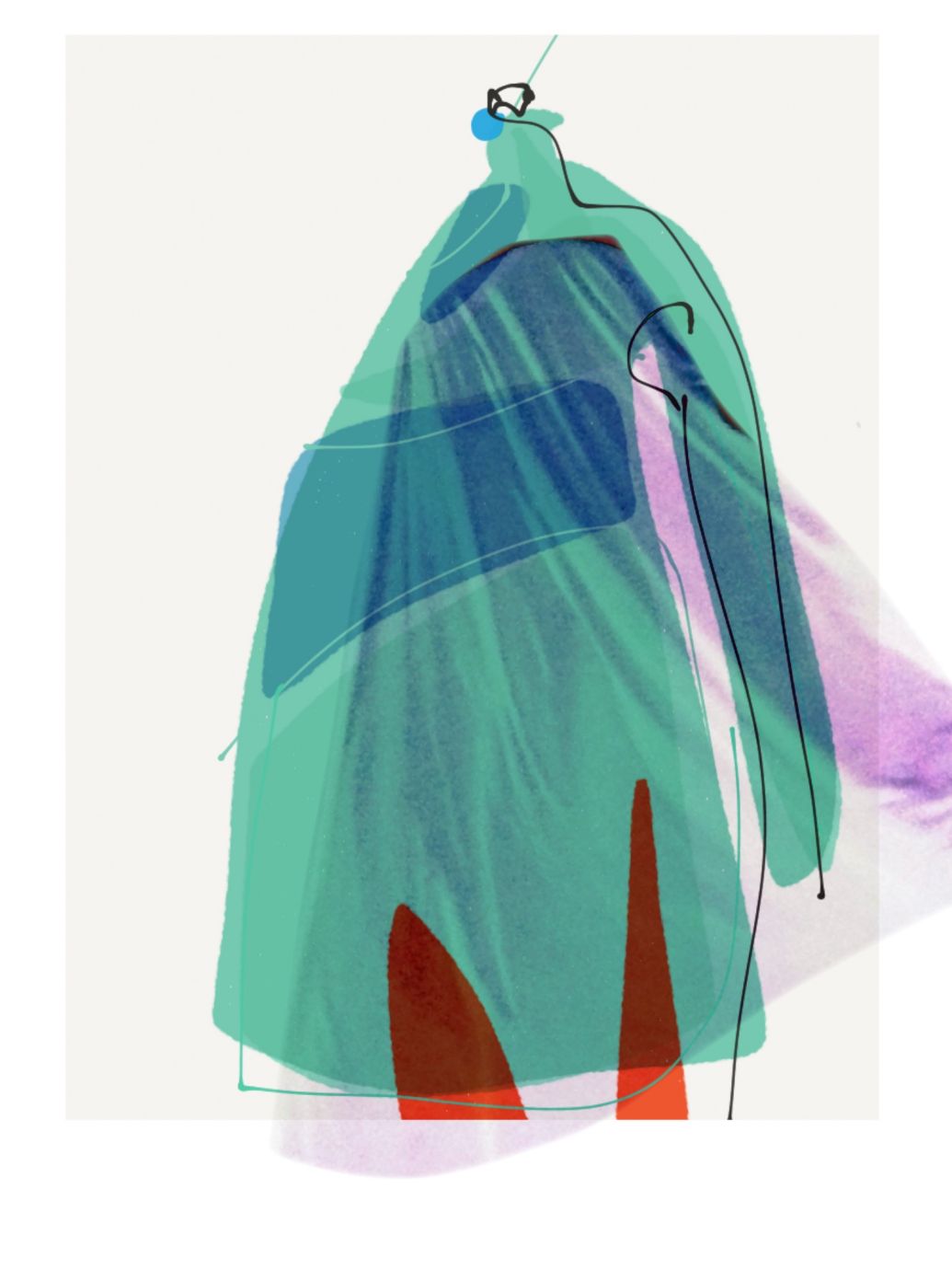Phoebe recently graduated from the Fashion MA, where she combined her love for knitwear and colour. “Starting my BA in fashion knitwear was weird. I remember my mother teaching me how to knit at the age of 7, and I threw the needles at her because I hated it so much… And now I have just finished my MA!” The designer came from an art background, and it reflects in her process: instead of indulging in library research, she always preferred to collage, draw and take photos.
Phoebe comes from an ‘arty’ family – her mother was a textile restorer and her father collected 20th century furniture. She spent her childhood in church, and those experiences frequently creep into her work: the designer was an altar server clothed in long gowns that were never a perfect fit. “You could see what people wore under – fishnets, trainers, things that you would never associate with church.” Although her graduate collection doesn’t directly reflect religion, Phoebe’s work still references juxtapositions, things not looking quite the way they should be. “I like to look at things that people wouldn’t see unless it was pointed out to them.”

